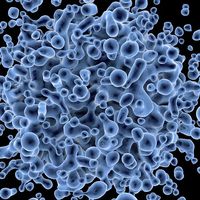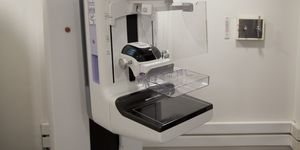Cell Interaction Mechanism Drives Inflammation in Severe Asthma
Asthma is not commonly recognized as a dangerous disease, however, about 10 Americans die each day from it. In addition, about 440,000 hospitalizations and 1.3 million emergency room trips result from asthma-related incidences each year. Dr. Toshiaki Kawakami, MD, PhD, a member of the Center for Autoimmunity and Inflammation at the La Jolla Institute of Immunology (LJI) highlights in his work the importance of asthma, as it relates to the immune system. His recent publication in The Journal of Allergy and Clinical Immunology identifies the mechanism that drives severe asthma and reports a possible therapy that can treat the disease.
Kawakami and colleagues investigated severe asthma and rhino-induced asthma exacerbation, which are two separate types of asthma. Rhino-induced asthma exacerbation is the asthma that generally comes with the common cold. It has been previously determined that some individuals with severe asthma do not respond to current asthma treatment. Kawakami and colleagues report that individuals with both types of asthma could benefit from novel therapies which block molecules that promote the immune response that generates asthma. Histamine-releasing factor (HRF) is one molecule that is used for cells to communicate with one another. Once an individual encounters an allergen, cells in the body release HRF and looks to bind to antibodies, which elicit different signals to other immune cells. The other molecule the therapy block is an antibody known as immunoglobulin E (IgE), which is increased in the body if an individual has an allergy.
Kawakami and colleagues have previously found that HRF and IgE interactions drive dangerous asthmatic reactions in mice. Therefore, they blocked both signals to determine the output effect in severe asthma. The current study further examines HRF and IgE interactions to determine the mechanism by which these molecules drive asthma. The researchers examined the interaction in multiple groups of patients from a collaboration between the University of Pittsburgh, Children’s hospital in Boston, and the University of Virginia. Interestingly, they not only analyzed adult patients with different levels of asthma, but also children. The wide-patient range is critical for improved treatment in all age groups and increases the rigor or thorough accuracy of the work.
Kawakmai and colleagues found that HRF and IgE interactions, in humans, increases inflammation in severe asthma and rhino-induced asthma. Additionally, the group demonstrated increased HRF secretion in human lung cells after infecting them with the virus that causes rhino-induced asthma. They also reported the same effect when the cells were exposed to dust mites, which commonly elicit an allergic response. The inhibition of the two molecules has shown to inhibit asthma and allergies in mice, but Kawakami and colleagues hope to apply this therapy to humans in clinical trials.
The findings Dr. Kawakami and colleagues outline the underlying mechanism that drives severe asthma and rhino-induced asthma. It is foundational work which has been recently confirmed in human patients. It was unclear previously what drove inflammation in severe and rhino-induced asthma. Additionally, it was unclear how to overcome such diseases when patients were not responding to current treatment. Kawakami and others not only identified a portion of the mechanism but provided a solution for patients. The study is groundbreaking and pushes the boundary of medicine because the work provides possible treatment options to patients with severe and rhino-induced asthma.
Publication, asthma-related incidences, The Journal of Allergy and Clinical Immunology, Toshiaki Kawakami, LJI, University of Pittsburgh, Children’s hospital in Boston, University of Virginia








